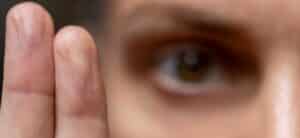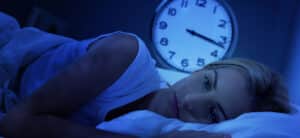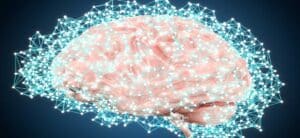
Why Memory Malingering Assessment Matters: A Simple Guide to TOMM Testing
Memory malingering assessment is a vital part of neuropsychological evaluations. More than 45% of neuropsychologists use specialized tests to verify if memory complaints are genuine. The Test of Memory Malingering (TOMM) stands out as a reliable assessment tool, especially in clinical settings where diagnosis accuracy matters most.
TOMM uses a systematic approach with 50 black target stimulus items through multiple trial phases. The testing method has shown impressive results with a 94.7% correct classification rate for people with and without cognitive impairment. The test results need careful interpretation because specific cutoff scores and multiple trials determine valid outcomes.
This piece covers everything in TOMM testing, from its basics and administration process to result interpretation for accurate memory malingering assessment.
What Is Memory Malingering and Why Test For It?
Malingering happens when people deliberately fake or greatly exaggerate physical or psychological symptoms to get external rewards. The Diagnostic and Statistical Manual of Mental Disorders (DSM-5) defines malingering as “the intentional production of false or grossly exaggerated physical or psychological symptoms, motivated by external incentives” [1]. People who malinger want specific things like money, time off work, avoiding criminal charges, or getting medications. This behavior is different from real cognitive problems.
Definition of malingering in clinical settings
Clinical settings show that malingering is different from factitious disorder mainly in what drives it. People who malinger want external benefits, while those with factitious disorders want to play the role of being sick for psychological reasons [1]. Resnick’s framework breaks malingering into three types:
- Pure malingering: Complete fabrication of symptoms
- Partial malingering: Exaggeration of existing symptoms
- False imputation: Intentional attribution of symptoms to unrelated causes [2]
Malingering isn’t a psychiatric disorder, but doctors need to think carefully about it when they see two or more signs: legal context, big gaps between claimed symptoms and actual findings, poor cooperation during evaluation, or antisocial personality traits [3].
Impact of malingering on healthcare and legal systems
Undetected malingering creates problems throughout society. The insurance industry loses about $150 billion yearly to malingering [link_1], which adds $180 to each family’s insurance costs [4]. Medical and psychiatric cases show malingering rates of 8%, but these numbers go up substantially in certain settings – over 20% in emergency departments [2] and 17% in forensic populations [1].
The criminal justice system faces serious delays when people fake psychiatric symptoms to postpone their trials or move to better facilities [5]. Social Security Disability data shows that malingering occurs in 46%-60% of adult mental disorder claimants, which costs at least $20 billion every year [2].
The need for objective assessment tools
Doctors learn to spot illness, not deception. They need objective tools to help them. Even “professional lie catchers” like forensic psychologists aren’t better at spotting lies than untrained people [2].
The Test of Memory Malingering (TOMM) has become crucial to tell the difference between real cognitive problems and fake symptoms. TOMM helps identify people who purposely do poorly on memory tests, while remaining challenging even for people with serious cognitive issues like dementia or traumatic brain injury [6].
These objective measures protect systems and individuals from the risks of both missed malingering and wrong accusations of malingering that can stigmatize patients forever [5].
Understanding the TOMM Test Structure
The TOMM has a three-part format that indicates if someone thinks over performing poorly on memory tests. This 50-item forced choice visual recognition test has two learning trials and an optional retention trial. Each trial plays a unique role in the assessment process [7].
Trial 1: Initial assessment process
The test begins as people look at 50 black line drawings. Each image appears for about 3 seconds [3]. The recognition phase follows where they must spot previously shown images paired with unfamiliar distractors. We used Trial 1 as a learning chance and screening tool. Research suggests scores ≥41 indicate adequate effort [8]. Studies that indicate even 4-year-olds have enough recognition memory skills to complete this task well [7].
Trial 2: Confirmation and validity
People view the same 50 drawings again before taking a second recognition test. Trial 2 is the life-blood of standard TOMM interpretation. Scores below 45 (out of 50) usually point to potential malingering [9]. The second trial’s accuracy soars – studies show all cognitively intact people and 92.7% of cognitively impaired (non-dementia) groups score above the cutoff threshold [10]. These results are the foundations of determining genuine versus feigned memory impairment.
The Retention trial: When and why it’s used
The Retention trial happens about 15 minutes after Trial 2 [3]. The test manual states this trial becomes optional if someone scores above 45 on Trial 2 [11]. All the same, researchers suggest giving the Retention trial whatever Trial 2’s results. Studies show it can increase detection rates of suboptimal effort by 16-19% [12]. One study found that stopping before the Retention trial left 3% of malingerers undetected [13]. Young children’s performance, especially 4-5 year olds, often drops during the Retention trial because they lose interest in repetitive tasks [7].
How to Administer the TOMM Effectively
The Test of Memory Malingering (TOMM) needs careful attention to standardized procedures to work properly. A well-executed test will give valid results and reduce false positives while assessing memory malingering.
Step-by-step administration guide
The TOMM takes 15-20 minutes [9] and needs a quiet, controlled space. Here’s the standard way to give it:
- Start with clear instructions but don’t reveal that this tests for malingering
- Show 50 line drawings one after another in Trial 1, with 3 seconds per image and a 1-second gap between them [14]
- Move to the recognition phase and show 50 panels that each have two choices
- Let examinees know if their answers are right or wrong after each response
- Run Trial 2 with similar procedures
- You might need the optional Retention Trial about 15 minutes after Trial 2 ends [14]
Common administration errors to avoid
The test’s name and purpose should stay hidden from examinees to protect its validity [15]. Visual tasks between Trial 2 and the Retention Trial should be avoided, though research shows this might not matter as much as we once thought [14].
Test sequence mistakes happen often too. Past guidelines said not to give tests like the Boston Naming Test before the TOMM because they might interfere [14]. All the same, studies show test order barely affects most examinees’ results [14].
Special considerations for different populations
TOMM works well with children as young as 5, and they usually perform like adults do [1]. Note that outpatient settings show substantially higher TOMM failure rates (49%) than inpatient settings (7%) when translation services are needed [4].
Remote testing needs document cameras or well-positioned web cameras to display stimuli clearly. Ask examinees to say their answers instead of pointing and keep their hands where you can see them to prevent stimulus recording [15].
People with severe dementia often score below cutoff points even when they’re trying their best [10].
Interpreting TOMM Test Results
Healthcare professionals need to understand both standard guidelines and subtle factors that affect performance validity assessment to interpret TOMM results accurately. The challenge lies in striking the right balance between sensitivity and specificity when evaluating memory malingering.
Standard cutoff scores and what they mean
The TOMM interpretation traditionally uses a cutoff of <45 (out of 50) on Trial 2 or the Retention Trial that indicates potential malingering [3]. This standard cutoff shows high specificity (0.96-0.98) but moderate sensitivity (0.46-0.56) [16]. Research suggests a cutoff of <42 for Trial 1 achieves sensitivity values between 0.59-0.70 while maintaining specificity at ≥0.90 [16]. Most patients with severe cognitive impairment or mild mental retardation can still perform within normal range on Trial 2 [3].
Alternative scoring approaches for increased sensitivity
Recent studies show that higher cutoffs can improve detection rates without compromising validity. A modified cutoff of <49 helps improve sensitivity (0.59-0.70) while maintaining adequate specificity (0.91-0.97) [16]. A cutoff of ≤48 on Trial 2 keeps specificity at about 90% [17]. Yes, it is worth noting that even a single error (score of 49) on Trial 2 provides enough evidence to question response credibility [2].
Factors that may affect test performance
TOMM results can be influenced by various factors without suggesting malingering. Patients who need interpreters show much higher failure rates (49%) in outpatient settings compared to inpatient settings (7%) [4]. Young age, less education, and disability status link to lower scores in veteran populations [18]. Children under 5 often score lower on the Retention trial, which suggests careful interpretation of results for very young test-takers [19].
When to question validity of results
Low TOMM scores usually point to poor effort, but some clinical conditions need special attention. Patients with dementia score below cutoff points despite genuine effort [3]. Patients who have dysexecutive syndrome and positive Alzheimer’s biomarkers often fail the TOMM. This shows the test’s limitations in specificity for certain neurological conditions [20]. Clinicians should never use the TOMM as their only tool to determine performance validity [2].
Conclusion
TOMM testing is a vital tool for healthcare professionals to assess memory malingering. It delivers impressive accuracy rates and stays practical in clinical settings. Standard cutoff scores give reliable results, but new research points to alternative scoring methods that could improve detection sensitivity without affecting specificity.
Your success with TOMM testing depends on how well you administer the test and interpret its results. Healthcare professionals need to think about several factors that might affect test performance. Age, education level, and specific clinical conditions all play a role. This becomes especially important when you have patients with dementia or those who need translation services.
The test works so well because of its well-laid-out approach and proven success in a variety of populations. Healthcare professionals should note that TOMM results are just one piece of a complete evaluation process. When you combine TOMM findings with other clinical data, you’ll get an accurate assessment of memory complaints. This protects healthcare systems and patients from what it means to miss undetected malingering.
FAQs
Q1. What is the Test of Memory Malingering (TOMM)?
The TOMM is a standardized assessment tool used to identify individuals who may be exaggerating or faking memory problems. It consists of multiple trials where participants view and later identify images, helping professionals distinguish between genuine cognitive impairments and feigned symptoms.
Q2. How accurate is the TOMM in detecting memory malingering?
The TOMM has demonstrated high accuracy, with studies showing a 94.7% correct classification rate for both cognitively intact and impaired individuals. Its standard cutoff scores have high specificity (0.96-0.98) but moderate sensitivity (0.46-0.56).
Q3. What are the potential consequences of undetected memory malingering?
Undetected malingering can have significant financial and social impacts. It costs the insurance industry approximately $150 billion annually, increases healthcare costs, and creates bottlenecks in the legal system. It also affects the allocation of resources in disability claims and can lead to misdiagnosis in clinical settings.
Q4. Can the TOMM be used with children or individuals who need interpreters?
Yes, the TOMM can be used with children as young as 5 years old, with their performance typically similar to adults. However, caution is advised when interpreting results for very young children. For individuals requiring interpreters, it’s important to note that failure rates may be higher in outpatient settings compared to inpatient settings.
Q5. Are there any limitations to the TOMM test?
While the TOMM is highly effective, it does have some limitations. Individuals with severe dementia often perform below cutoff scores despite genuine effort. Additionally, patients with certain neurological conditions, such as dysexecutive syndrome or positive Alzheimer’s biomarkers, may fail the test. Therefore, TOMM results should always be considered alongside other clinical data for a comprehensive evaluation.
References
[1] – https://pubmed.ncbi.nlm.nih.gov/21294004/
[2] – https://pubmed.ncbi.nlm.nih.gov/28657355/
[3] – https://link.springer.com/10.1007%2F978-0-387-79948-3_216
[4] – https://www.cambridge.org/core/journals/journal-of-the-international-neuropsychological-society/article/what-are-the-predictors-of-tomm-failure-in-clinical-tbi-populations-a-retrospective-analysis/5610410CAD7C1AD97BDB73C97C718894
[5] – https://pmc.ncbi.nlm.nih.gov/articles/PMC6308182/
[6] – https://taylorandfrancis.com/knowledge/Medicine_and_healthcare/Neurology/Test_of_Memory_Malingering/
[7] – https://pmc.ncbi.nlm.nih.gov/articles/PMC4208967/
[8] – https://pubmed.ncbi.nlm.nih.gov/21846261/
[9] – https://www.wpspublish.com/tomm-test-of-memory-malingering
[10] – https://www.sciencedirect.com/science/article/pii/S0887617703000787
[11] – https://academic.oup.com/acn/article-pdf/22/1/87/10275/22-1-87.pdf
[12] – https://www.researchgate.net/publication/7648590_Should_the_Retention_trial_of_the_Test_of_Memory_Malingering_be_optional
[13] – https://www.sciencedirect.com/science/article/pii/S0887617705001113
[14] – https://www.researchgate.net/publication/49679636_Administration_Order_Effects_on_the_Test_of_Memory_Malingering
[15] – https://mhs.com/wp-content/uploads/2020/11/Remote-Administration-Guidelines-TOMM.pdf
[16] – https://pubmed.ncbi.nlm.nih.gov/31357918/
[17] – https://www.researchgate.net/publication/364372821_An_alternative_approach_to_TOMM_cutoff_scores_using_a_large_sample_of_military_personnel
[18] – https://pubmed.ncbi.nlm.nih.gov/34428386/
[19] – https://pubmed.ncbi.nlm.nih.gov/25247460/
[20] – https://pmc.ncbi.nlm.nih.gov/articles/PMC9396449/






















